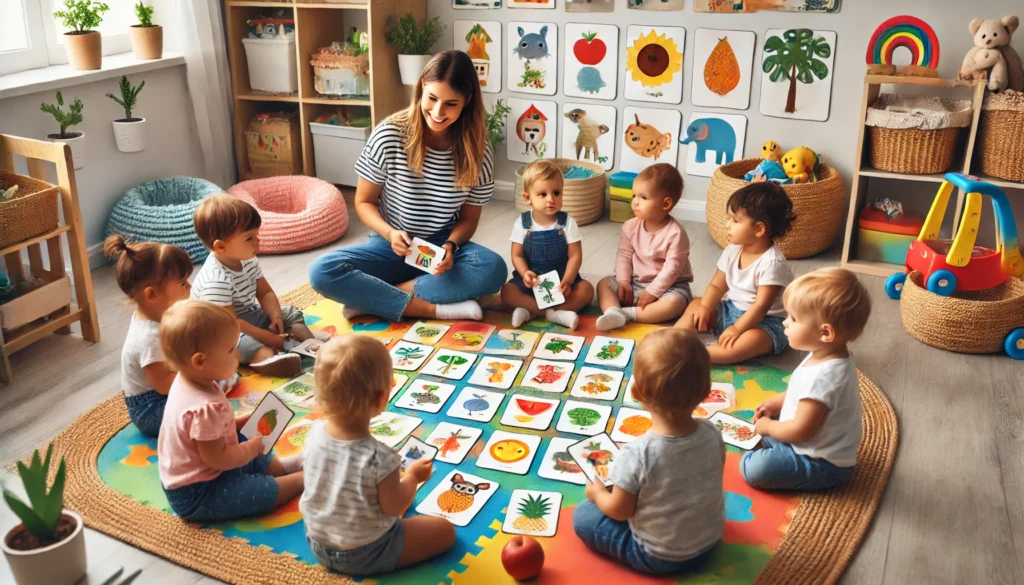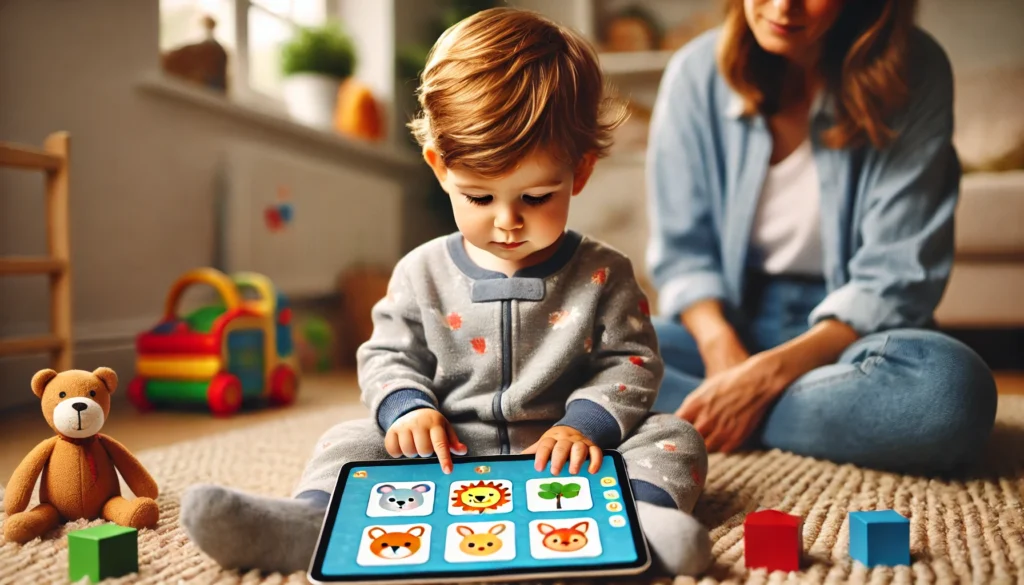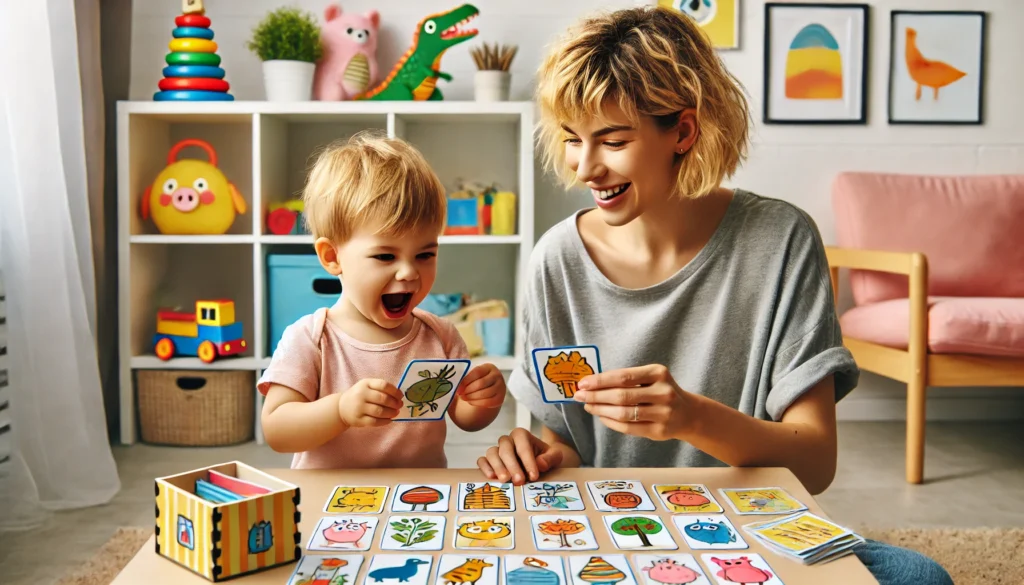The formative years of a child’s life are marked by rapid cognitive development, making it a prime time to introduce activities that stimulate their growing minds. Among these activities, memory games play a pivotal role in enhancing cognitive abilities, fostering concentration, and developing problem-solving skills. In this article, we will delve into engaging memory games that can boost toddler skills and explore the science behind their effectiveness.
You may also like: Boost Your Mind: Top Brain Games
The Science of Memory Games
Memory games for toddlers are more than just entertainment; they are grounded in cognitive science principles that foster brain development. The human brain is a remarkable organ, capable of forming new neural connections throughout life—a concept known as neuroplasticity. During early childhood, the brain’s plasticity is at its peak, making it an ideal time to introduce memory-enhancing activities.
Neuroplasticity and Early Childhood
Neuroplasticity refers to the brain’s ability to reorganize itself by forming new neural connections. During early childhood, this plasticity is particularly pronounced, allowing for significant developmental changes. Memory games leverage this natural adaptability, providing a foundation for lifelong learning and cognitive flexibility.
Cognitive Functions and Memory
The brain’s frontal lobe is where much of the action takes place when playing memory games. This area is responsible for higher-order cognitive functions such as decision-making, problem-solving, and, of course, memory. Memory games help stimulate these areas, promoting better executive functioning and strategic thinking in toddlers.
Emotional and Social Benefits
Memory games also offer emotional and social benefits. Playing these games can improve a child’s mood and reduce anxiety by providing a sense of achievement. Furthermore, when played in groups, memory games teach children important social skills such as cooperation, sharing, and patience.
Matching Cards for Toddlers
One of the most effective and accessible memory games for toddlers is matching cards. This classic game involves finding pairs of cards with identical images, promoting visual memory and concentration.
How to Play
Begin with a set of cards featuring familiar images, such as animals or everyday objects. Lay the cards face down and encourage your toddler to flip two cards at a time, attempting to find a match. As your child becomes more adept, increase the number of cards to enhance the challenge.

Choosing the Right Cards
Select cards that resonate with your child’s interests, whether it’s animals, vehicles, or colors. This not only keeps them engaged but also helps them relate the game to real-world objects, enhancing learning.
Building Complexity Gradually
Start with a small number of pairs to avoid overwhelming your toddler. Gradually increase the complexity by adding more cards or introducing themes, which can also help expand their vocabulary and categorization skills.
Interactive Play Strategies
Introduce fun elements like timing the game or creating a story around the images to keep the experience fresh and exciting. This approach encourages creativity and keeps your toddler engaged longer.
Benefits of Matching Cards
Visual Memory: Matching cards strengthen visual memory by requiring children to recall the location of specific images. This ability to remember visual information is crucial as they begin to learn to read and write.
Attention to Detail: The game encourages careful observation and attention to detail, skills that are vital for academic success. By focusing on small differences, children enhance their ability to notice changes in their environment.
Patience and Turn-Taking: Playing with others teaches patience and the importance of taking turns, fostering social development. This helps build interpersonal skills that are essential for future interactions in school and beyond.
Enhancing Problem-Solving Skills
Matching games also promote problem-solving skills as children learn to devise strategies to remember card positions. This enhances their ability to think logically and make decisions based on the information they have gathered.
Memory Games and Language Development
Memory games are not limited to visual skills—they also contribute to language development. By incorporating language into memory games, toddlers can expand their vocabulary and improve linguistic abilities.
Picture-Word Association
Introduce a memory game that pairs pictures with corresponding words. For instance, match a picture of a cat with the word “cat.” This activity not only reinforces visual memory but also enhances word recognition and language skills.
Expanding Vocabulary
By using a range of images and words, you can introduce new vocabulary in a fun and engaging way. This helps toddlers to learn new concepts and words in context, making them more likely to remember.
Phonemic Awareness
Picture-word association games can also aid in developing phonemic awareness. By associating sounds with words, children learn the fundamentals of reading and spelling, which are crucial for literacy development.
Cultural and Contextual Learning
Incorporate images and words from different cultures to broaden your child’s understanding of the world. This not only enriches their vocabulary but also fosters an appreciation for diversity.
Story-Based Memory Games
Create a narrative around the memory game by asking your toddler to remember and recount a sequence of events or characters. This exercise promotes both memory retention and storytelling abilities.
Sequencing Skills
Story-based games enhance sequencing skills, which are essential for understanding the order of events in a story. This skill is vital for reading comprehension and logical reasoning.
Creativity and Imagination
Encouraging children to create and tell their stories based on the game boosts their creativity and imagination. This not only makes the game more enjoyable but also enhances their ability to express themselves.
Emotional Expression
Through storytelling, children learn to express their feelings and ideas, aiding emotional development. This can be particularly beneficial in helping them articulate experiences and emotions in real-life situations.

Future Implications: The Role of Technology
As technology continues to advance, digital memory games have emerged as an innovative way to engage young minds. While traditional card games remain effective, digital platforms offer interactive experiences that captivate toddlers’ attention.
Interactive Apps
Numerous educational apps are designed specifically for toddlers, providing a range of memory games that adapt to a child’s skill level. These apps often incorporate colorful graphics, sounds, and rewards to maintain engagement.
Adaptive Learning
Many digital platforms use adaptive learning technologies that adjust the difficulty level based on the child’s performance. This ensures that the game remains challenging yet achievable, promoting continuous learning.
Immediate Feedback
Digital games provide instant feedback, which is crucial for learning and motivation. Children can quickly see the results of their actions, helping them understand mistakes and learn from them.
Engaging Multimedia Elements
The use of multimedia elements like animation, sound, and interactivity makes digital games highly engaging. These elements can capture a child’s attention more effectively than static images, facilitating longer periods of focused play.
Screen Time Considerations
While digital memory games offer benefits, it is essential to monitor screen time. The American Academy of Pediatrics recommends limiting screen time for children aged 2 to 5 years to one hour per day of high-quality programming. Balance digital activities with traditional play to ensure a well-rounded cognitive development.
Parental Involvement
Parents should actively engage with their children during screen time to enhance the educational value of digital games. By discussing the game and its content, parents can turn passive consumption into an interactive learning experience.
Quality over Quantity
Focus on the quality of screen time rather than the quantity. Choose apps and games that are educational, age-appropriate, and align with your child’s interests to maximize their developmental benefits.
Balancing Digital and Traditional Play
Ensure that digital activities complement traditional play rather than replace it. Physical games and outdoor play are equally important for developing motor skills, social interactions, and overall well-being.
Practical Advice for Parents and Educators
When introducing memory games to toddlers, consider the following tips to maximize their effectiveness:
1. Start Simple: Begin with a few cards or simple games to avoid overwhelming your child. Gradually increase complexity as their skills improve.
- Understanding Limits: Recognize your child’s current level and build from there, ensuring they feel challenged but not frustrated.
- Celebrating Milestones: Acknowledge each new level of complexity your child masters to keep them motivated.
- Customizing Challenges: Tailor the difficulty to your child’s interests and strengths to make learning more personalized and effective.
2. Encourage Participation: Involve your child in choosing the game or theme, making the activity more enjoyable and personalized.
- Empowering Choices: Allowing children to make choices fosters a sense of ownership and enthusiasm for the activity.
- Theme Exploration: Explore a variety of themes to keep the games fresh and aligned with your child’s evolving interests.
- Interactive Decision-Making: Use this opportunity to teach decision-making skills by discussing the pros and cons of different game options.
3. Be Patient: Toddlers may take time to grasp the concept of memory games. Offer encouragement and celebrate small victories.
- Positive Reinforcement: Use praise and rewards to reinforce effort and persistence, not just success.
- Modeling Patience: Demonstrate patience yourself, showing children how to handle frustration and setbacks gracefully.
- Encouraging Perseverance: Teach children that mistakes are part of learning, encouraging them to try again and learn from their experiences.
4. Create a Routine: Incorporate memory games into daily routines to establish consistency and reinforce learning.
- Scheduled Playtime: Set aside specific times for memory games to help children anticipate and look forward to these sessions.
- Integrating Learning: Combine memory games with other daily activities, such as storytime or mealtime, to reinforce concepts naturally.
- Routine Flexibility: While consistency is important, be flexible and adapt the routine to fit your child’s mood and energy levels.

Conclusion
Engaging memory games are a valuable tool in boosting toddler skills, offering benefits that extend beyond mere entertainment. By integrating matching cards and other memory-enhancing activities into daily play, parents and educators can support cognitive development, language skills, and social growth. As technology evolves, digital platforms provide new opportunities for engagement, but traditional games remain a cornerstone of early childhood learning. By balancing scientific insights with practical advice, you can foster a rich environment for your toddler’s development—one memory game at a time.
Further Reading:
Simplified Matching Game for Toddlers
Memory game for kids: 3-6 years
7 games to help your child master matching
Important Note: The information contained in this article is for general informational purposes only, and should not be construed as health or medical advice, nor is it intended to diagnose, prevent, treat, or cure any disease or health condition. Before embarking on any diet, fitness regimen, or program of nutritional supplementation, it is advisable to consult your healthcare professional in order to determine its safety and probable efficacy in terms of your individual state of health.
Regarding Nutritional Supplements Or Other Non-Prescription Health Products: If any nutritional supplements or other non-prescription health products are mentioned in the foregoing article, any claims or statements made about them have not been evaluated by the U.S. Food and Drug Administration, and such nutritional supplements or other health products are not intended to diagnose, treat, cure, or prevent any disease.


